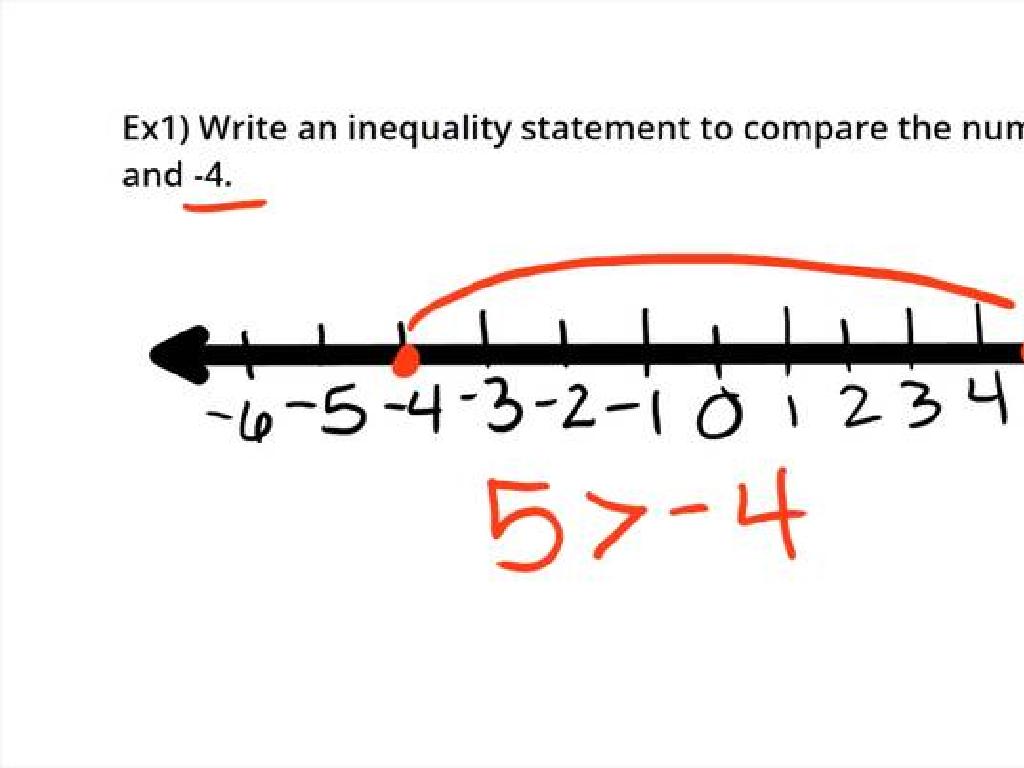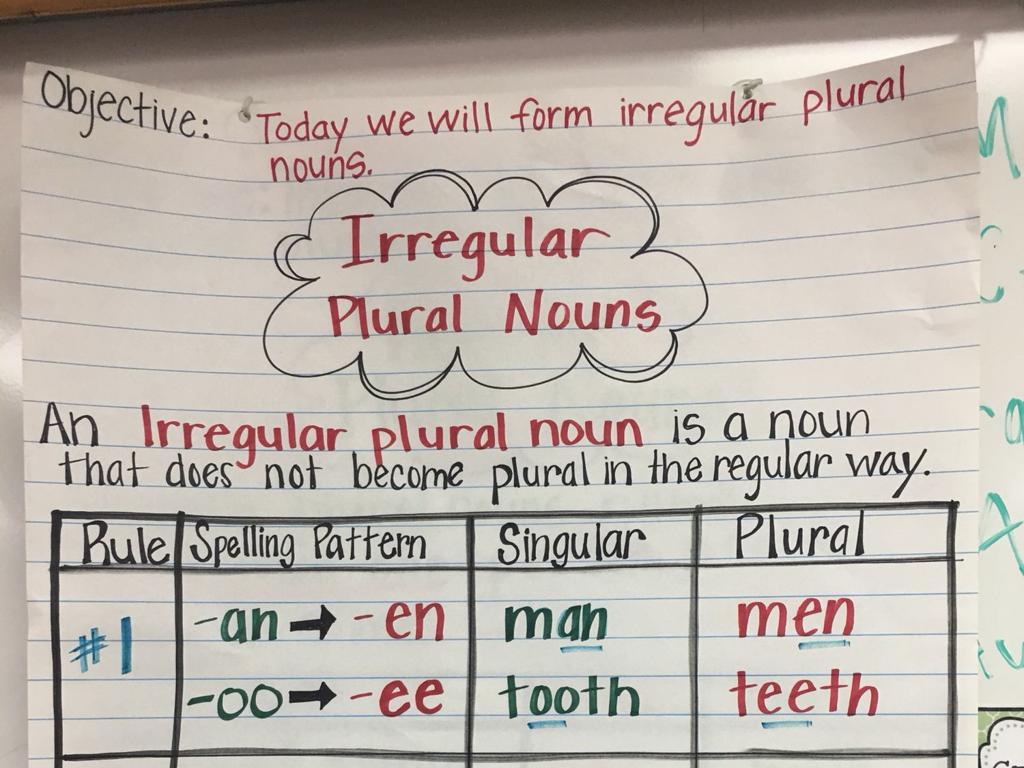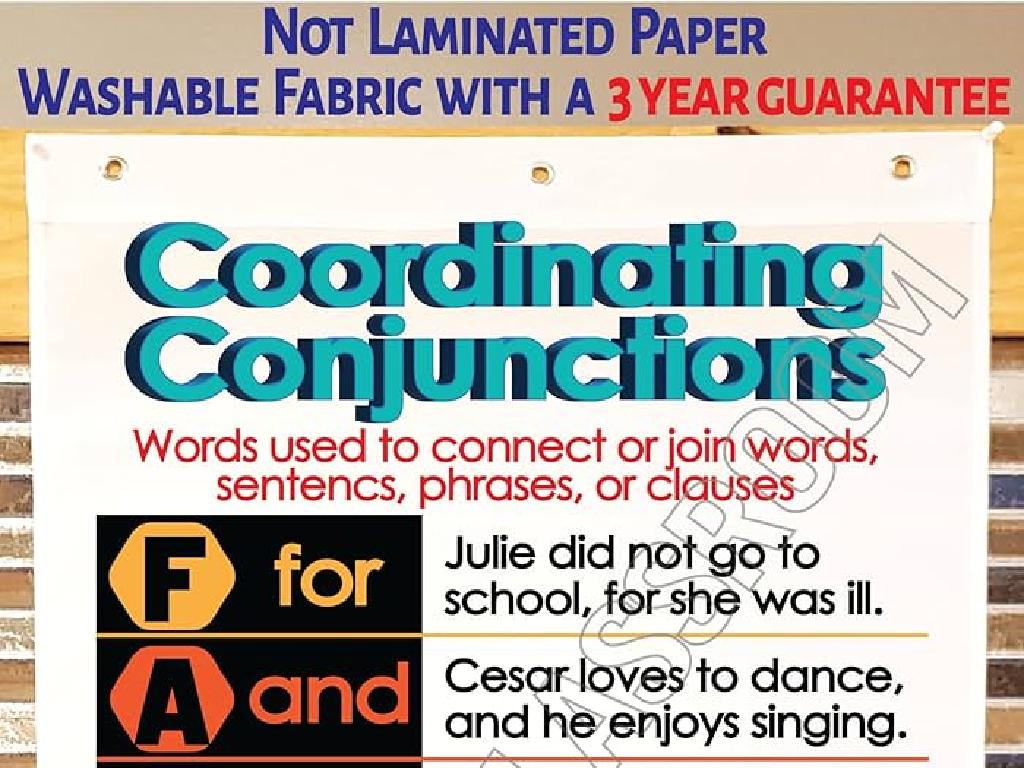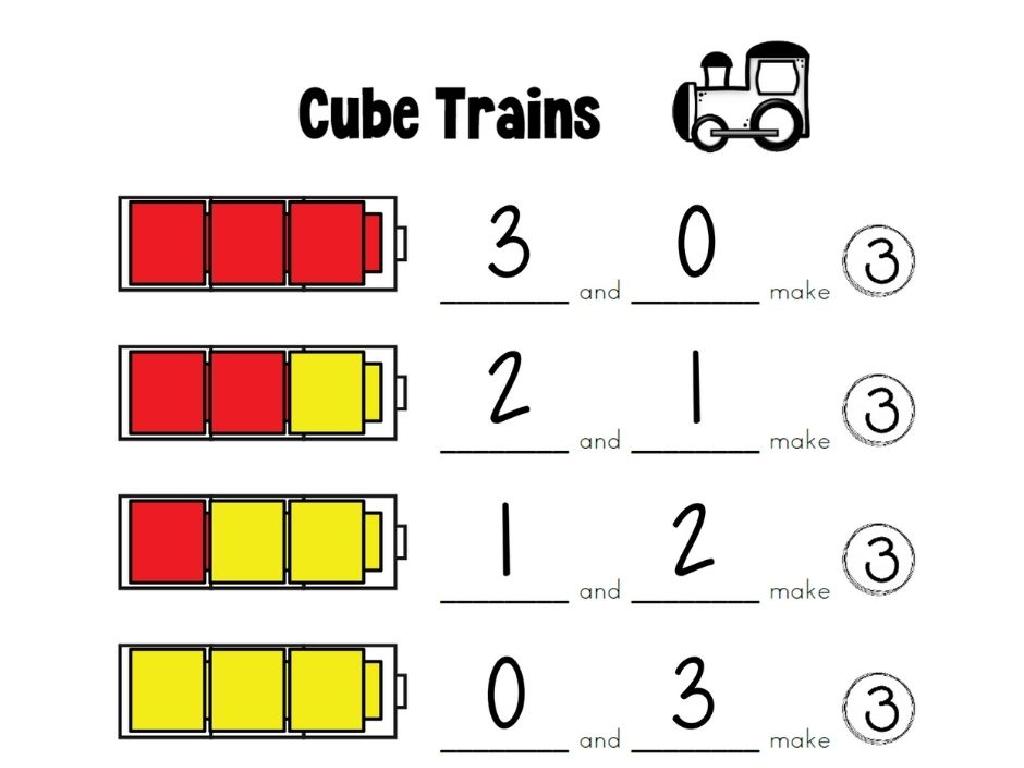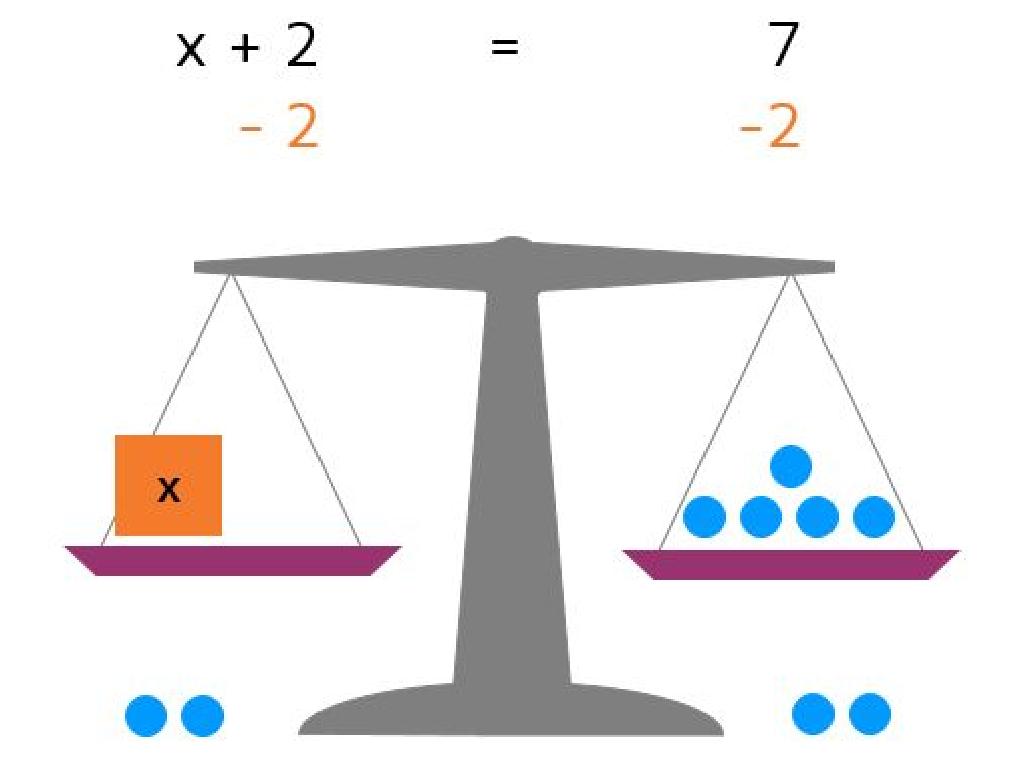Equivalent Groups Of Coins
Subject: Math
Grade: First grade
Topic: Money
Please LOG IN to download the presentation. Access is available to registered users only.
View More Content
Welcome to Money Math: Learning About Coins
– Coins have different values
– Counting coins together
– Add coins to find their total value
– What are equivalent coins?
– Coins can be swapped for the same total value
– Examples of coin groups
– 4 quarters = 1 dollar, 10 dimes = 1 dollar
|
This slide introduces the concept of money, specifically focusing on coins and their value. Start by showing the students different coins and explaining that each coin has a value. Then, demonstrate how to count coins by adding their values together. Introduce the concept of equivalent groups of coins by explaining that different combinations of coins can add up to the same amount of money. Use tangible examples, such as showing that four quarters are the same as one dollar, or ten dimes also equal one dollar. Encourage students to think of other combinations of coins that could add up to the same value. This will help them understand that there are many ways to create the same total amount using different coins.
Meet the Coins
– Meet Penny, Nickel, Dime, Quarter
– Penny is 1 cent, Nickel is 5, Dime is 10, Quarter is 25
– Each coin’s value is unique
– A penny is worth 1 cent, a nickel is worth 5 cents, a dime is worth 10 cents, and a quarter is worth 25 cents.
– Count coins with a fun song
– Sing along to learn how to count coins easily
– Practice makes perfect
|
This slide introduces the basic coins used in the United States: the penny, nickel, dime, and quarter. Emphasize to the students that each coin has a different value, with the penny being the least valuable and the quarter being the most valuable in this group. Introduce a simple song or rhyme to help them remember the value of each coin and make the learning process enjoyable. Encourage the students to practice counting coins at home using real or play money to reinforce their understanding. The goal is for students to become comfortable recognizing and counting these coins, laying the foundation for future money-related math skills.
Understanding the Value of Coins
– A penny equals 1 cent
– A nickel equals 5 cents
– A dime equals 10 cents
– A quarter equals 25 cents
|
This slide introduces the basic values of U.S. coins to first graders. It’s important to start with clear and simple information. Show real coins or images of a penny, nickel, dime, and quarter, and explain that each coin is worth a different amount of cents. A penny is the smallest value, and a quarter is the largest value of the coins listed. Use hands-on activities with actual coins or manipulatives to help students practice identifying and counting each coin. Reinforce the concept that 100 cents make a dollar, and these coins are part of the way to reach one dollar. Encourage students to touch and see the coins to remember their values.
Making Equivalent Groups of Coins
– Understanding ‘equivalent’
– ‘Equivalent’ means equal in value or amount
– Examples of coin groups
– 4 quarters = 10 dimes, both equal a dollar
– Coin matching game
– Match different coins that add up to the same value
– Practice with real coins
|
This slide introduces the concept of ‘equivalent’ in the context of money, specifically coins. Start by explaining that ‘equivalent’ means having the same value, even if the items (coins) look different or are in different amounts. Show visual examples of different groups of coins that add up to the same value, such as 4 quarters and 10 dimes both equaling one dollar. Introduce a matching game where students pair sets of coins that have the same total value, which can be a fun and interactive way to reinforce the concept. Encourage hands-on practice with real or play coins to solidify understanding. The goal is for students to recognize value equivalency across different combinations of coins.
Counting with Coins
– Practice counting coins
– Use real or play coins
– Hands-on learning with coins
– Different ways to make 10 cents
– Example: 1 dime or 10 pennies
– Counting coins helps with math
|
This slide is aimed at helping first graders understand the concept of equivalent groups of coins by practicing counting with real or play coins. The objective is to demonstrate that there are multiple ways to make the same amount of money, using the example of 10 cents. Teachers should have a variety of coins available for students to use during the activity. Encourage the children to explore different combinations, such as 1 dime, 2 nickels, or 10 pennies, to make 10 cents. This exercise will not only help them with their counting skills but also with understanding the value of different coins and how they can be used interchangeably. The hands-on experience will make the learning process engaging and memorable.
Fun with Coin Combinations
– Create different coin combos
– Draw your coin combinations
Use crayons or markers to draw the coins
– Share combos with the class
Explain your combos to your friends
– Learn the value of each combo
How much is your combo worth?
|
This slide introduces a fun and interactive class activity focused on understanding the concept of equivalent groups of coins. Students will create various combinations of coins that add up to the same value, draw these combinations, and then share their findings with the class. This activity will help students to recognize the different ways to combine coins to reach the same total, reinforcing their understanding of coin values and basic addition. Teachers should prepare to facilitate the activity by providing examples of coin combinations, ensuring students have drawing materials, and organizing the class into small groups for discussion. Encourage students to think creatively and to practice their counting skills.
Class Activity: Coin Hunt!
– Find hidden coins in the classroom
– Pair up to group coins equally
– Work together to make equal value groups
– Each group equals the same amount
– For example, 5 pennies = 1 nickel
– Present your coin groups to class
|
This interactive activity is designed to help first graders understand the concept of equivalent values using coins. Hide various coins around the classroom before the activity starts. Students will search for these coins and then work in pairs to group different coins that add up to the same total value. This could be 10 pennies equalling 1 dime, or 2 nickels equalling 1 dime, etc. After grouping, each pair will present their findings to the class, explaining how they made their groups equivalent. This exercise will reinforce their understanding of coin values and equivalence. For the activity, ensure there are enough coins for all students and that pairs are formed with consideration to student dynamics. Possible variations for different pairs could include finding ways to make 25 cents, 50 cents, or even a dollar using different coins.
Money Matters: Review & Importance
– Recap coin values
– Remember, a penny is 1 cent, a nickel is 5 cents, a dime is 10 cents, and a quarter is 25 cents.
– Importance of money knowledge
– Knowing about money helps us buy things we need and want.
– Questions on today’s lesson
– Summarize key points
– Let’s remember how to make different amounts using coins.
|
As we conclude today’s lesson on equivalent groups of coins, start by reviewing the value of each coin with the students. Reinforce the concept that different combinations of coins can equal the same amount of money. Emphasize the importance of understanding money, as it is a fundamental skill for everyday life, helping with purchasing decisions and saving. Open the floor for a question and answer session to address any uncertainties the students may have about the lesson. Encourage them to think of questions related to making equivalent groups of coins or the value of coins. Finally, summarize the key points of the lesson to reinforce learning and ensure students are comfortable with the concept of equivalent groups of coins.

